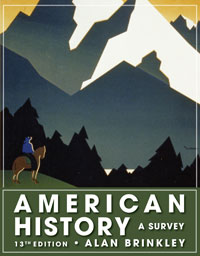1 A) construct the foundations of the federal welfare system. B) transform the Democratic Party into the dominant force in American politics for the next thirty years. C) preside over the birth of the modern labor movement. D) end the Great Depression. E) close all American banks. 2 A) consistent application of clear-cut philosophies to social and economic problems. B) optimistic and ebullient personality. C) refusal to engage in tedious and politically charged press conferences. D) public demonstration of how a man could overcome physical paralysis. E) appeal to the lower classes. 3 A) public panic caused by the bank failures. B) collapse of agriculture. C) problem of widespread unemployment. D) deflationary spiral that had crippled business. E) stagnant farm prices. 4 A) progressive income tax. B) poll tax, literacy test, and other discriminatory voting restrictions. C) prohibition of the manufacture and sale of alcoholic beverages. D) "quota system" of immigration limitations. E) right for women to vote. 5 A) it involved large-scale destruction of existing crops and livestock to reduce surpluses. B) it required farmers to boost agricultural production. C) it outlawed the practices of farm tenancy and sharecropping. D) it favored the interests of small farmers over those of large farmers. E) it favored the interests of large farmers over those of small farmers. 6 A) provide payments for reduced production in the interest of soil conservation. B) help irrigate and reclaim marginal lands for cultivation. C) provide loans for resettlement. D) help farmers relocate to better lands. E) make electric power available through utility cooperatives. 7 A) trade association agreements on pricing and production B) loans by the national government to railroads, banks, and insurance companies C) legal protection to the right of workers to form unions D) a major program of public works designed to pump needed funds into the economy E) legal right of workers to engage in collective bargaining 8 A) used an overly broad definition of interstate commerce. B) waived antitrust laws for cooperating businesses. C) granted public money to private corporations. D) applied only to corporations, not partnerships and sole proprietors. E) allowed for child labor. 9 A) caused massive flooding in certain regions. B) suffered as a result of the collapse of the electrical utility empire of Samuel Insull. C) was intended to serve as an agent for comprehensive redevelopment of the entire region. D) converted the Tennessee Valley into one of the most prosperous regions of the country. E) received strong support from the nation's utility companies. 10 A) take the country off the gold standard. B) establish the Federal Deposit Insurance Corporation (FDIC). C) transfer control over interest rates from the Federal Reserve Board to Congress. D) establish the Securities and Exchange Commission (SEC) to police the stock market. E) grant cash to states in order to prop up bankrupt relief agencies. 11 A) cash grants to states B) work relief C) a government dole for individuals D) private charity E) Roosevelt and Hopkins did not actively work together to provide assistance to those in need. 12 A) stimulate a broad recovery of the economy. B) provide relief to the lower classes first. C) create a permanent welfare system. D) apply the principles of Keynesian economics. E) be limited in scope and temporary in duration. 13 A) pragmatic. B) laissez-faire. C) doctrinaire liberal. D) democratic socialist. E) economically liberal. 14 A) organized labor. B) ethnic minorities. C) trade associations. D) the great mass of consumers. E) child labor. 15 A) flood control B) experimentation with regional planning and rehabilitation C) the establishment of a standard of comparison for measuring private power rates D) the establishment of a precedent for full government ownership and operation of all utilities E) a need to establish a cheap source of electric power through the nation's resources 16 A) limit population growth. B) promote reforestation and land conservation. C) help young married couples buy homes on easy mortgage terms. D) provide an interracial living experience to promote harmony. E) keep the youth population from turning to crime. 17 A) strong conservative opposition to the New Deal. B) promoting civil rights for blacks and other minorities. C) promoting popular support for the spirit of the New Deal. D) a desire among intellectuals to adopt more radical solutions to the nation's economic ills. E) strong opposition to the communist movement. 18 A) a hatred of the financial powers who were impoverishing the nation B) a belief in the federal government's power to reform American society C) an unwavering support of President Roosevelt D) a faith in the social benefits of radical wealth redistribution E) a strong support of fascism 19 A) an adoption of some of the more radical plans of Long, Coughlin, and Townsend. B) a willingness to openly attack corporate interests. C) a caution created by the Supreme Court's striking down of some of the agencies of the First New Deal. D) an unwillingness to place additional tax burdens on the rich. E) a more aggressive move towards more liberal legislation. 20 A) abolished the National Labor Relations Board. B) provided unemployment benefits for workers on strike. C) provided strong government protection for unions. D) explicitly repudiated the right of collective bargaining. E) did not guarantee the right of unions to organize. 21 A) union shop. B) closed shop. C) craft unionism. D) industrial unionism. E) unionization. 22 A) retirement benefits B) unemployment benefits C) health insurance benefits D) benefits to dependent children of impoverished parents E) pension payments 23 A) actors B) construction workers C) writers D) bankers E) musicians





